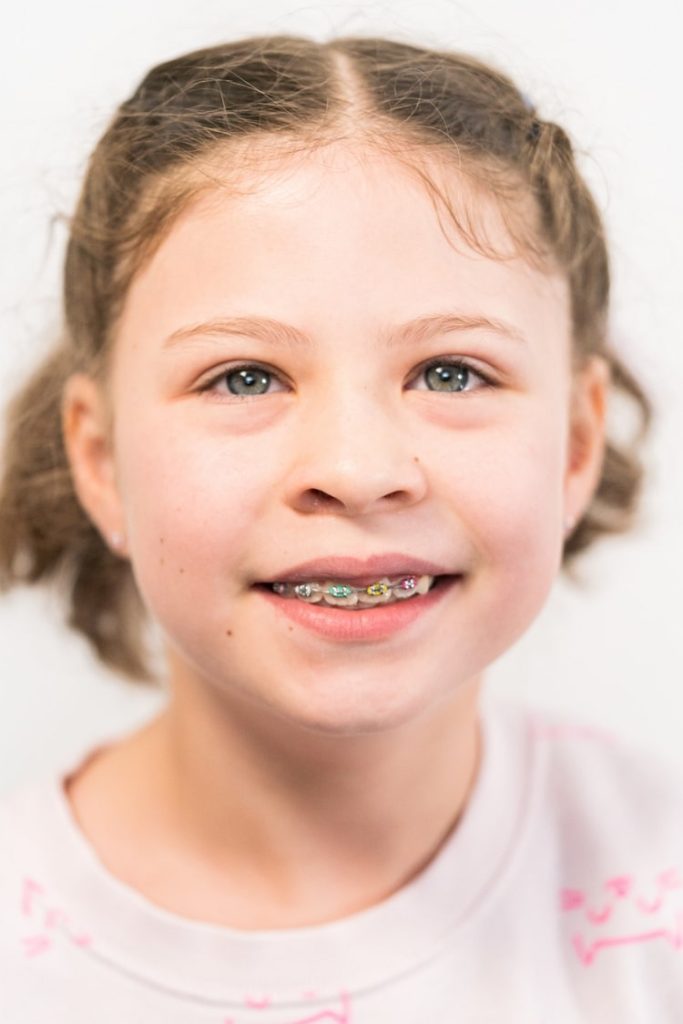What are the benefits of interceptive orthodontics?
The benefits of interceptive orthodontics are multiple, both functionally and aesthetically. Among the most notable, we can highlight:
-
Guides and corrects the growth of the jaws.
-
Prevents or reduces the need for future tooth extractions.
-
Improves the child’s chewing and breathing function.
-
Corrects harmful habits such as mouth breathing, atypical swallowing, or thumb-sucking.
-
Promotes proper alignment of permanent teeth.
-
Enhances facial aesthetics and boosts the patient’s self-esteem from an early age.
-
Reduces the need for longer or more complex corrective orthodontic treatments during adolescence.
Indications for interceptive orthodontics
Not all children require interceptive treatment, which is why it is essential to have an orthodontic check-up starting at 6 years of age. There are certain signs that may indicate the need for this type of treatment:
-
Anterior or posterior crossbite.
-
Open bite (the front teeth do not touch when the mouth is closed).
-
Reverse bite or mandibular prognathism.
-
Severe dental crowding from an early age.
-
Facial asymmetries or jaw deviations.
-
Lack of space for the eruption of permanent teeth.
-
Premature loss of baby teeth without space maintenance.
-
Persistent oral habits that affect dental development.
In any of these cases, interceptive orthodontics allows for early and effective intervention to guide dental development toward functional and aesthetic balance.

What types of appliances are used in interceptive orthodontics?
Depending on the issue to be corrected, the specialist may recommend different types of appliances. The most common in interceptive orthodontics are:
-
Functional appliances: used to guide mandibular or maxillary growth. They can be removable or fixed, and their purpose is to stimulate or restrain the growth of one of the jaws according to the case’s needs.
-
Palatal expanders: used to widen the upper jaw when there is a crossbite or lack of space. This is usually a fixed appliance that acts progressively.
-
Space maintainers: placed when a baby tooth is lost prematurely to prevent adjacent teeth from occupying its place and hindering the proper eruption of the permanent tooth.
-
Habit-breaking devices: appliances specifically designed to help eliminate harmful oral habits such as thumb sucking or tongue thrusting.
Each treatment is designed individually, taking into account the child’s age, type of alteration, and degree of bone development.

How long does interceptive orthodontic treatment last?
The duration of interceptive orthodontic treatment can vary depending on the complexity of the case, but generally ranges between 6 and 18 months. Once this phase is completed, in many cases, follow-up during the patient’s growth is necessary, and sometimes it is later complemented with corrective orthodontics during adolescence.
However, timely intervention significantly reduces the time, cost, and complexity of subsequent orthodontic treatment. Additionally, it allows the final results to be more stable and long-lasting.
Why perform interceptive orthodontics at Dr. Lluch Dental Clinic?
At Clínica Dental Dr. Lluch, we have a specialized pediatric orthodontics team that evaluates each child’s growth and development comprehensively. We conduct a personalized study using clinical records, X-rays, intraoral photographs, and digital scans to establish an accurate diagnosis and propose the most suitable treatment for each case.
Our preventive approach and experience in pediatric dentistry allow us to detect functional and skeletal alterations early, which could affect the child’s oral development. We strongly believe in the importance of early, attentive, and professional care to achieve a healthy and harmonious smile in the future.


